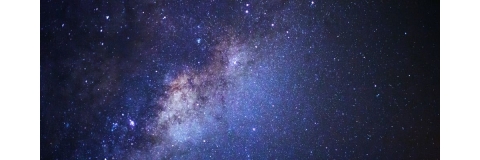
Sidebar navigation
- A generation marked
- A life-saving solution in the palm of your hand
- A new way of understanding the Universe
- A question of science
- Airborne microplastics can be found even in the worlds most remote places
- Algorithms for wind
- Amateur sleuths muscle up the science of discovery
- Are we close to the greatest discovery since penicillin
- Better Public services
- Brexit: Why EU Investment Doesnt Mean A Vote for the EU
- Britains burning question
- Building intelligence into systems allows them to make the right decision
- Call of the Wild
- Can research ethics survive a pandemic
- Children in limbo
- Complementary methods of astronomy help to discover patterns in the Universe
- Computing helps children make sense of the world and helps clinicians save lives
- Control systems are integrating renewable energy with the power grid
- Crime fighters go wild
- Diversity straining on its leash
- Dont stop moving
- Driving us closer to greener transport
- Ecology - a brand new economy
- Float to live
- From rags to environmental riches
- Fukushima
- Gravestones helping preservation
- Growing solutions for greener manufacturing
- Help smokers kick the habit
- How virtual reality could help cut crime
- Independence and violence
- Life saving NEWS
- Messages from time
- Microplastics in our homes
- Model of Light
- New Facial Palsy treatment
- New field of astrophysics is answering questions about the origins of the Universe
- New memory techniques
- New tactic in the battle against breast cancer
- Past mapped for the present
- Space technology helping earthlings to survive
- Taking a closer look at an often misunderstood material
- The Timeline Technique
- The buck stops on a shop shelf near you
- The devils in the details of the deep blue sea
- The world is our oyster
- There is something in the water
- Plumbing new depths of sustainable behaviour
- Quantum physics is powering the new tech revolution
- Revealing the secrets of the start of the Universe
- Shop til you drop
- Showing how a low carbon economy can flourish
- Transparency in global food production
- Understanding people to design better prosthetic hands and arms
- Using maths to help tackle climate change
- Virtual Reality pain management
- What does social media mean for our politics
- Why Game Theory could be the key

The quest to seek the truths of the Universe
Using gravitational waves to see the Universe in a totally different way
Where do galaxies come from? Did they start off really small? How did they become the monsters we see today? How does gravity work near black holes?
Our Gravitational Wave Group is hoping to answer such questions in their quest to seek the truths of the Universe. Dr Andrew Lundgren, our Reader in Gravitational Wave Science, is part of this group. He’s using gravitational waves, a new area of astrophysics, to see the Universe in a totally different way.
Created when black holes or neutron stars collide, gravitational waves are unstoppable. As they travel through space, they spread out. By the time they reach Earth they’re incredibly tiny. This makes it nearly impossible to detect these waves.
It’s taken decades of work fine-tuning gravitational wave detectors to make the impossible possible. Before the first gravitational waves were detected, in 2015, there was no direct proof they existed. It was all theoretical up to that point. Not any more.
We’ve only started making a lot of progress in the last couple of years. We’re now getting a sense of what the life cycle of stars is. Not just in our galaxy but very far out.
Dr Andrew Lundgren, Reader in Gravitational Wave Science
Listening to the Universe
Andrew explains:‘We’ve only started making a lot of progress in the last couple of years. We’re now getting a sense of what the life cycle of stars is. Not just in our galaxy but very far out. We’re using two 4km long detectors, that are like gigantic microphones, to detect colliding black holes and neutron stars.’
Gravitational waves make mirrors in the detector vibrate at levels smaller than the size of an atom. It’s extraordinarily subtle stuff. Initially, these waves were detected at the rate of around one a month. Increasing sensitivity means this has risen to about one a week.
Andrew says:
‘Gravitational waves move fast but the frequencies are a lot lower than light. So you can actually hear them.
‘We’re listening out for the last moments of dead stars coming together about a billion light years away. When this happens, the sound propagates through space time and ripples in space. And these instruments pick it up.’
What does it sound like?
‘It sounds remarkably like a bird chirping!’
Challenging the accepted
Andrew wants to push the boundaries of Einsten’s theory of gravity.‘Einstein’s theory is perfect. It has no flaws. But black holes push at space-time and so push this theory to the limits of what it can do. And we’re hoping to find some evidence of what’s beyond this.
‘How does gravity really work? And then make a single theory of physics so it just encompasses everything. It’s the big goal in the field.’
Andrew has great hopes for the future:
‘As we build better detectors I want to see how galaxies form. When they form they have gigantic black holes in their centre. We don’t really know where those come from. When galaxies merge, their black holes have to merge too, but we can’t pick that up right now.’
These questions could be answered when LISA (Laser Interferometer Space Antenna) launches in the 2030s. Andrew hopes this spacecraft will enable him to see galaxies coming together and their black holes merging.
‘And then,’ he says, ‘We will be able to see the entire history of the Universe.’
